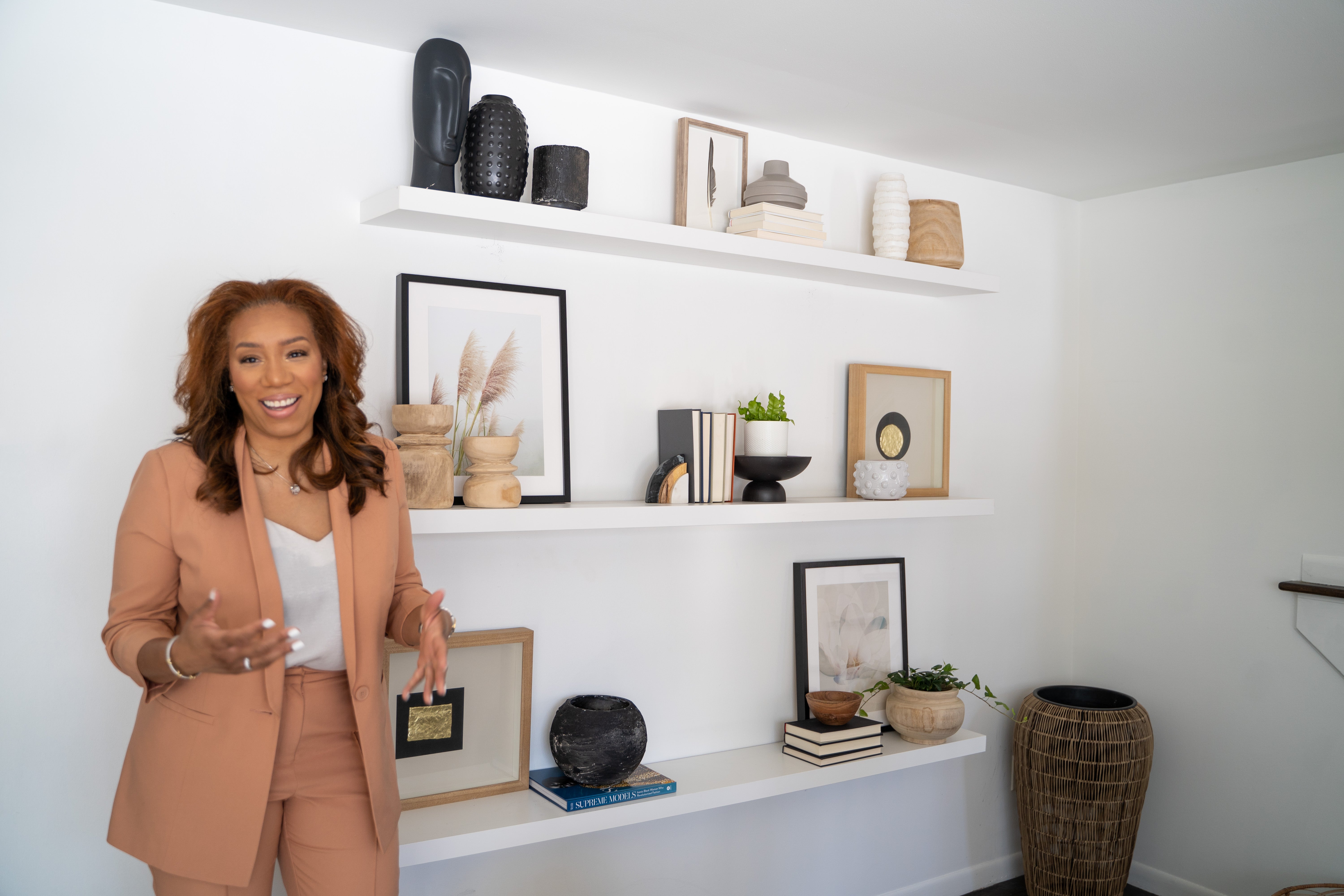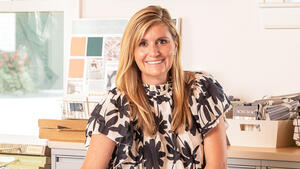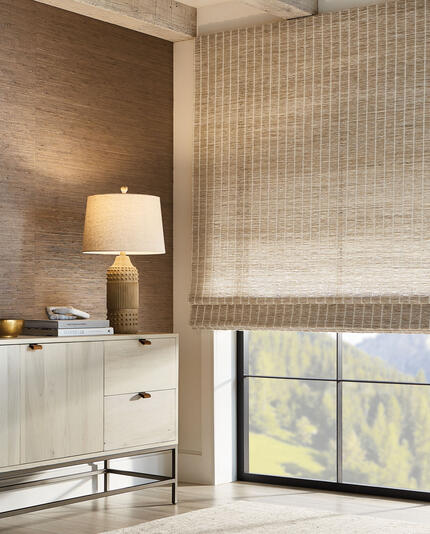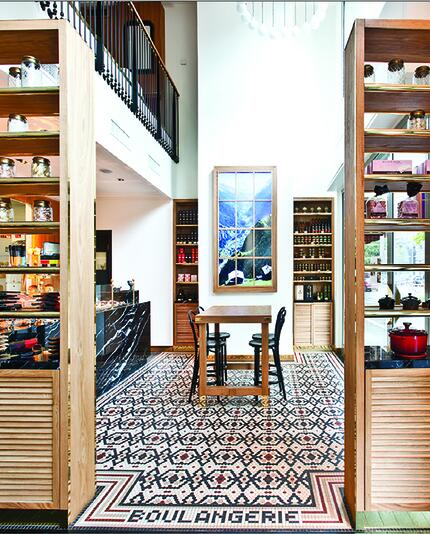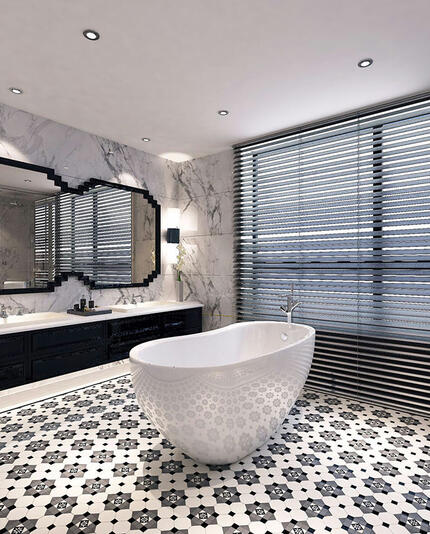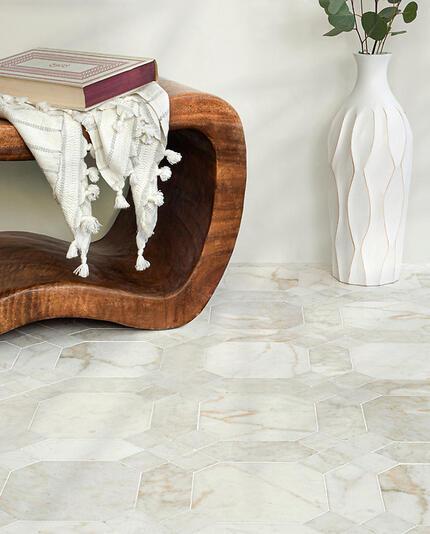The 50 States Project is a series of candid conversations with interior designers across the country about how they’ve built their businesses. This week, West Bloomfield, Michigan–based designer Mia Johnson tells us how her skills as a corporate project manager translate to design, how going to High Point Market was a game-changer for her business, and why she insists on in-person consultations before signing a contract.
What was your path to realizing that design could be a career?
Design has always been in me. I helped my mother design her kitchen. I’m dating myself, because it was the pearly ivory paint and a border with the fruit. After I had moved out, I designed my baby sister’s room—my mother said, “Here’s the budget, Mia,” and I did it. So when you say, “What was your path?” I feel like it started when I was born. I just didn’t realize I could make it a career until 2019, when people started saying, “I will pay you to help me.” A big part of my passion is reaching out to young people of any background—but particularly to young women of color—because I didn’t know that I could make design a career.
What sparked your professional interest in design?
I was working at Blue Cross Blue Shield of Michigan. I was a manager there, and I had expressed interest in wanting to get into project management. In 2008, a woman who’s a huge executive there now gave me my shot. She was like, “If I gave you this, are you going to sink or swim?” And I was like, “I got it.”
I was hired to help the company’s other project manager on the reconstruction of a 44,000-square-foot corporate office. Almost as soon as I took the project on, they were like, “OK, Mia, we need her to do something else—you’re going to do the whole project.” There was a corporate designer working on the project, but they just went into their binder and said, “If you are a director, you get this office. If you’re a VP, you get this office.” But I was like, “Do we have to do it like this? Let’s do this, and what about this?” All I knew was that this was the budget—if I spend the same money, why do they have to have these offices that are all plastic? Let’s give them wood and veneer, you know? So they got rid of the corporate designer—it was like, “Mia’s got it”—and next thing you know, I’ve got samples out of my ear and I was doing floor plans. I dove into it not knowing, but it felt as natural as can be.
What kind of changes were you making?
You know those little cubicles you can get? I was like, “That’s not inviting,” and I changed the fabric to a blue color. The offices went from gray to a cherry color. The kitchen in the cafeteria didn’t have any external windows, so I did some research on what to do: You make it bright. So there was this black-and-white herringbone floor that I requested with a bright green wall. People thought I was crazy, but the employees loved it. Then the CEO was like, “Mia, I want a bathroom in the boardroom.” At first, I was like, “You can’t have a bathroom in the boardroom, sir, because we’ve already done the plumbing.” Then I had to talk to the contractors all over again. Because I had to go between [my different business roles], I would be in a full suit with my hard hat on, saying, “Nope, what is happening up here?” And these guys were like, “Who is this lady?”
Were there roadblocks along the way?
I think the nerves made me better because I was like, “I can’t get this wrong.” I also knew how to read a floor plan—I’ve laid brick for missionary work and that sort of thing, so I had been on job sites before. And I had help: There was this old contractor who was so nice, and he really showed me the ropes. It was my first gig as a designer and a project manager—and I came in on budget, and the company went on to win an award for the job. And yet it never occurred to me that I could take it into design. I knew I was good at it and I enjoyed it. I didn’t think it was a way to make a living for me.
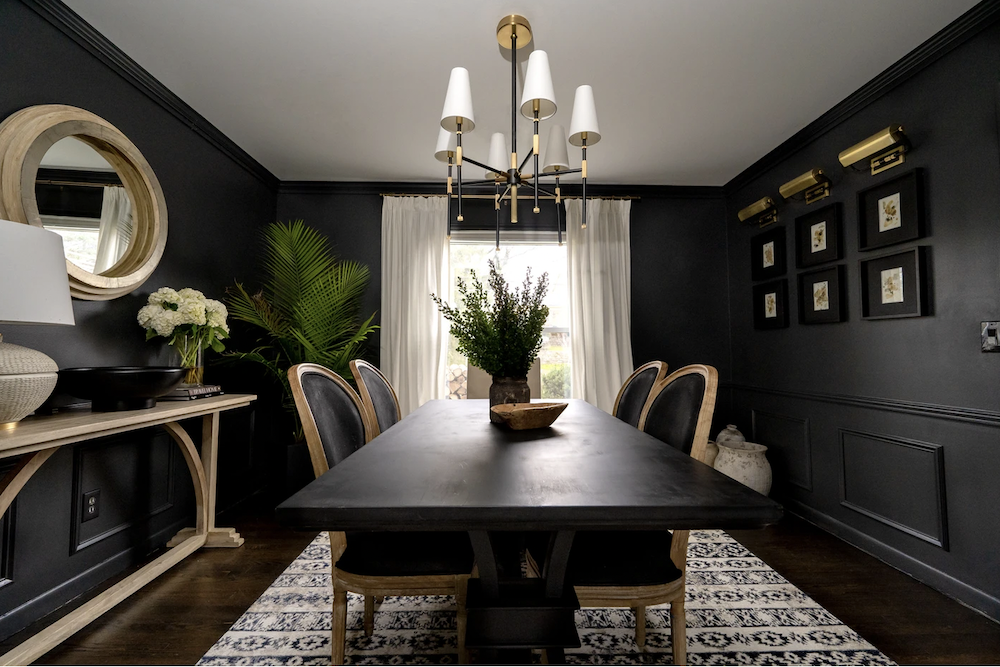
What did you do after that?
I got certified as a project manager and stayed there two or three more years. After that, I worked as a project manager at Ford, then I went back to health care and worked in the hospital space. Then I took about 18 months off and had my daughter. When I went back to work as a senior project manager in 2016, I was consulting in the energy space.
We bought a house in 2018, and my husband suggested that I start a blog to document the process. I did, but I realized that while I’m a good talker, I wasn’t a great blogger. I had heard stories about people blogging about their renovation process, and if I’m being really honest, I was thinking, “Maybe I can get some deals, or somebody will offer me products.” But instead, people would be like, “OK, Mia, what about this? How did you do that?” Then people started asking, “Can I pay you to do this?” I got my first big client in 2019. It was a full renovation—they bought the house and brought me in. We didn’t knock down any walls, but we did literally every room. The basement was a renovation down to the studs. I didn’t even have a business bank account.
When did you realize you could do design work full-time?
I got that first client in 2019, and soon after the world shut down with the pandemic. I was working in corporate America as a consultant, and I was working with this client, but everything that I was doing was still remote. My husband gave me an investment into the design business and said, “Here, use this as your startup [capital], and let’s see how this can go,” so I just didn’t renew my consulting contract. I probably wouldn’t have quit the corporate world so soon if the pandemic hadn’t happened, but I had my daughter at home, and I was going to need to be home with her—there were a lot of factors that went into it.
At that point, I only had that one client. My very first vendor was Design Trade Service—they are just wonderful, very kind and very easy to work with. But I get on there and I see that this bed is $500—it says retail, and then it says, “You pay this price,” the designer net. I had gotten so excited about finding the perfect bed for my client that I told her my price, and it wasn’t until I did a little research that I figured out I was supposed to charge the retail price. I hardly made any money on that first job, but it was a great learning experience for me. The client loves her home, and it opened so many doors for me.
Did the financial side get easier after that?
I’ve thought about quitting multiple times because I know what I can make easily in the business world. I see these designers online and I know they’re making a killing, but sometimes it’s like, “How are they doing it?” It took attending seminars and classes and looking at books to really figure it out—it wasn’t until the beginning of this year, if I’m being honest, that I was finally like, “I can be successful, and I can replace my corporate salary.” I am there now, but for a long time, I was missing the profitability because I didn’t understand how to price appropriately. I was charging a healthy hourly rate, but I gave so much that I wasn’t really earning anything. Or you get your first tax bill, and it’s like, “What are you talking about?” I have definitely had moments where I was like, “You know what? I think I’m going to go back on the job market.” But it has never felt good when I’ve done that. I’ve always really wanted to see this through and make it work, and I am finally doing that now. It’s working.
I’m very comfortable with a flat fee now because it’s very clear. In the real world, you know how much you’re going to make. That’s what allows me to budget appropriately—because clients have either paid the full balance or I’ve allowed them to be on a payment plan and I know what I’m going to get every month. The profitability from sourcing and product procurement—I can estimate that based on the budget and the job, but that’s almost like icing because the design fee is what I bank on and count.
What drove your business growth?
It was my Instagram feed, even though it’s not really large—I’m still under 4,000 followers. Even though I have a small account, I have high engagement. People really look at my content, and I started getting thousands of views on my videos once Instagram switched to long-form video versus 30-second Reels—it was an instant connection once I could talk to people. I stopped doing all of the super generic tags, and instead I do #detroitinteriordesigner and #michiganinteriordesigner, and people constantly find me through Instagram. Every time I get a new client, it’s either word-of-mouth or they saw me on Instagram.
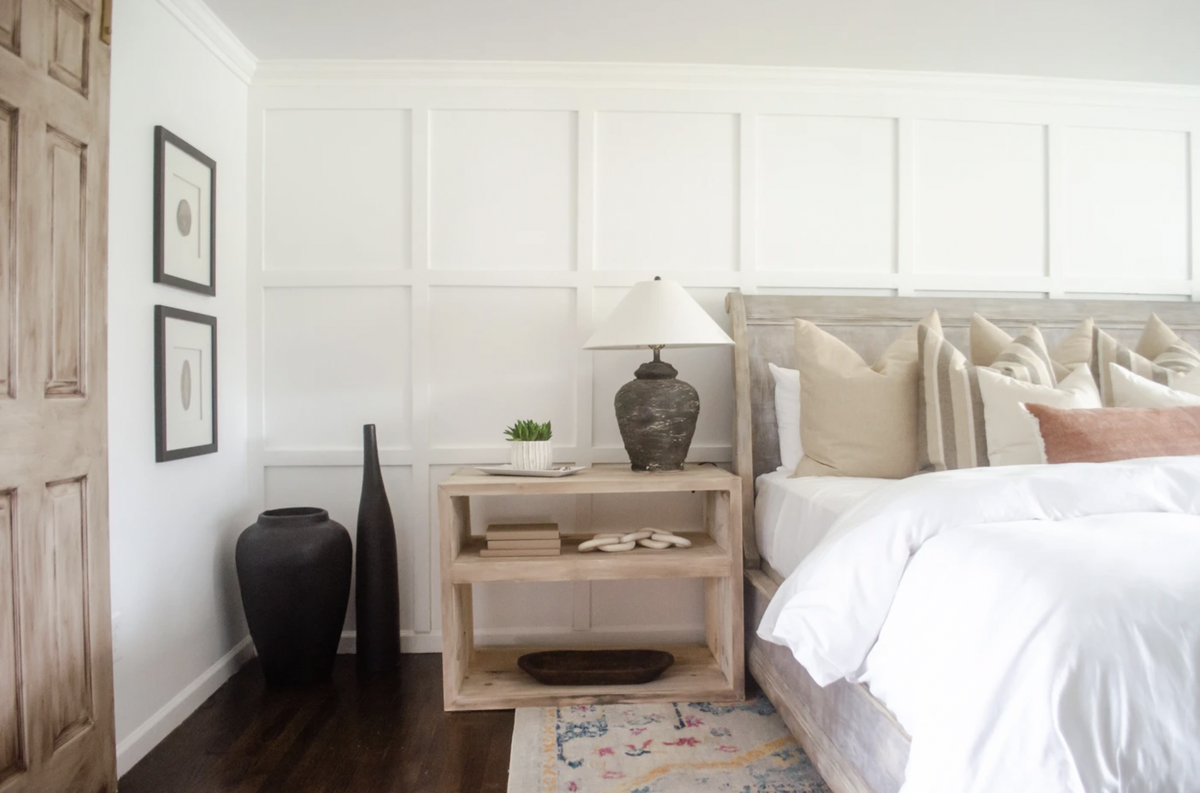
What does a full plate for your business look like today?
I would say five projects is good, that’s what I can manage.
It’s just you, right?
It’s just me. I have worked with an online business manager, who helped me get things together, and I can look to her to help me when I need to. I am very, very close to getting an assistant.
How does your background in project management give you a leg up in your approach to tackling a design job?
I don’t just see the pretty. I know that this can’t happen until that happens. I can see the timeline. I’m used to dealing with engineers, but everybody—all of the dependencies—they’re all the same, regardless of the field. It’s all like wrangling toddlers, you know what I mean? I don’t care if it’s dealing with an engineer, a painter or a contractor. Everybody’s the same, and you have to treat these people with utmost respect and dignity. Everybody wants to feel like you’re on their side, and you have to balance that out so nicely because really, you’re on the client’s side.
I’m also used to dealing with others being more responsible for key things but me being responsible for the outcome—that is the biggest thing with project management. It doesn’t matter how great I am, I’m not physically putting in the floor or the wallpaper.
Can you tell me a little bit about the design community in the Detroit area?
During 2008 and 2009, it was like, “What recession? What are you talking about?” in the suburbs here, but you could literally drive 10 minutes and you’d be in a totally different scenario. Today, my particular client base is kind of broad: I’ve got million-dollar homes, and I’ve also got hardworking people as clients. Even then, my most well-paid client is still a doctor, and she works every day. I don’t have clients who are independently wealthy, but my clients are considered successful. Their budgets may be $60,000 or $70,000, and they have beautiful homes.
Some other Michigan designers might be like, “Mia, I don’t know what you’re talking about, that’s not my experience,” but that is mine. It could have to do with—and let me make sure I say this right—race. Not in a bad way, but in terms of exposure. I do have clients who feel more comfortable working with a Black woman with their money, and I understand that. But not all of my clients are Black, and I’m very proud of that too.
Because of the housing prices here, and because the cost of living is so low, you don’t have to be a millionaire to have a really nice home. You can have a $500,000 or $600,000 home, and you could be a line worker—but you might not have another $200,000 to work on your home. I feel like I hear designers from New York talking about these houses that are millions of dollars, and their clients still have tons of excess cash. Corey Damen Jenkins is from here [but recently relocated fully to New York], and he says Detroit hustles harder. I hear stories of people saying, “Oh, you have to have at least $100,000 to work with me”—somebody on your podcast was like, “I have a million-dollar entry-level budget.” But Kaitlin, I would be sitting at home waiting for my phone to ring. And maybe I’ll get there one day, but it might be quite some time. And I’m OK with that because I feel like people deserve nice homes without spending a million bucks.
How does that impact what you say yes to?
For me, it’s the person. Are you going to drive me crazy? Are you going to trust me? Are you going to nitpick? Because yes, you deserve a beautiful home, so I will try to work within different types of budgets, but you will not work my nerves.
I have clients tell me all the time, “You’ve made this process so fun. You’ve made this process so much better for me.” That client can text me. The one who questions everything I do? Do not text me. Email me, and I will see you Monday through Friday. I have business hours—and if I choose to go outside those parameters and meet you on a Saturday, that’s going to be my choice. It won’t be yours. That’s why I like to meet with clients before any money is exchanged or a contract is signed. I need to know who they are and what type of person they’re going to be. What is the dynamic of the family? Is the husband creepy? All of those things.
So you’re going out and meeting someone in person to qualify leads before taking a job?
I have a design consult where we talk for about 30 minutes and I walk them through the process, and then a site visit where I walk through the space. I learned that at a seminar: How can you quote a price if you haven’t seen the space? I’ve seen that with other fields too—I tried to hire a housekeeper to come and clean, and they’re like, “We need to see it.” I’m like, “Well, I’m telling you how many square feet I’ve got, and how many bedrooms.” And they’re like, “We need to see it.” In the end, you may talk to me twice and see me once, before the contract is signed and money has changed hands.
I do research on the people before I go out—I get their name, look them up on LinkedIn, all of those things. For my own safety, too, I am seeing what’s going on. I will probably implement paid visits soon, but right now I don’t charge for that initial meeting. I’ve had people say, “I want to pay you for your time.” And I was like, “No, it’s OK.” But I’ve also tried to keep my location close, where I’m not going very far.
After the site visit, I create a proposal and contract, and once they sign it, that’s when we start doing measurements and a design consultation. I like to do those in person, too, so I can really see the clients.
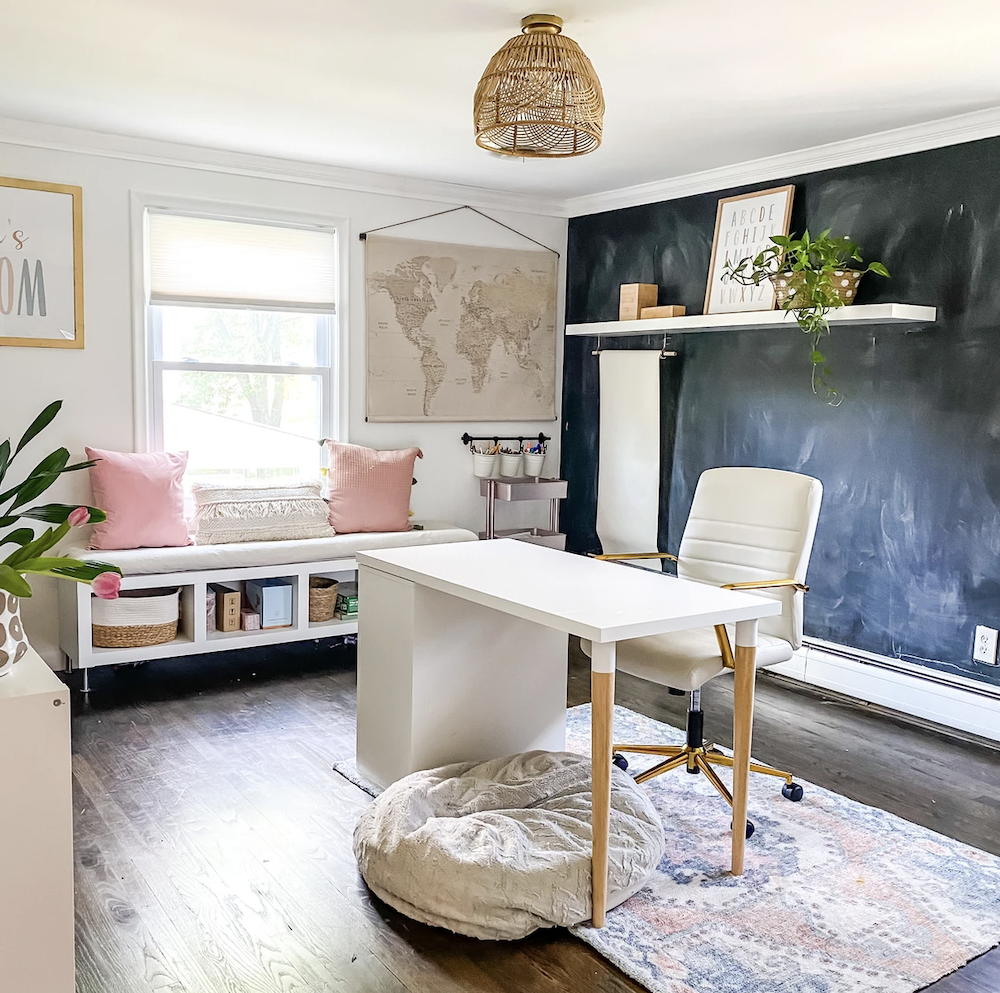
What is the biggest thing you know now that you wish you had known when you started your business?
How to charge. What is the right way to charge? Really, it’s about how to create structure and communicate. The professional way to say it is: How to define the value of the job—because people are thinking this is HGTV, where you’re going to have one problem like on Property Brothers, and you’re going to miraculously have the money in contingency.
The way you just reframed charging to be about value—I think that’s so smart.
You have to be able to realistically articulate the value. I think I knew that from being a project manager. I’ve noticed lately that even some of the HGTV shows have started to show real dependencies and wait times.
How do you talk about your value with clients?
I tell them that I am a person who goes to High Point Market once, maybe twice, a year, so I am finding unique products that you won’t see anywhere else. I am telling you that RH looks beautiful—but if you’re going to spend that much on a sofa, why not get one where we can probably get you performance fabric?
We were talking about how to charge before. How do you approach charging for product?
It’s in my contract that there are sourcing fees for procurement, or what people call “markup.” I don’t really like the word “markup,” because if you were to tell me you were doing a markup, I would have a problem with that. I call it “an access fee” or “a procurement fee,” that sort of thing.
“Procurement fee” is my favorite phrase in the industry right now.
It’s mine, too. Because it isn’t even just buying [product]—it is coordinating the shipping of it, and knowing when it’s going to come, and making sure it’s right. It includes me running to the design center multiple times, and my relationship with the vendor. All of that is what goes into it. Some clients get it, and some don’t.
You mentioned High Point Market. Has that been an important place for you to grow your sources and develop your business?
Without a doubt—especially the networking. I’ve made purchases at High Point, but mostly I’m networking with vendors and other designers. It has been a game-changer for me. I have put things in my clients’ homes that I wouldn’t have known about or had access to if I hadn’t gone to High Point and done a tour. I only did it because another designer told me to do it—but if it wasn’t for that tour, I wouldn’t have met some of these vendors that I purchase from now.
What does success look like for you?
I enjoy this career. I am so proud when my daughter says, “My mom is a designer.” Or when we’re somewhere and she’s showing me pieces—like, “Mom, did you see this light?” Particularly when we go to a hotel, because everything is so big and grand there. That just brings me so much joy.
To learn more about Mia Johnson, visit her website or find her on Instagram.



